
Civic engagement never hibernates: Five ideas from Knight cities on making the most of winter
Winter’s in its final days, but it’s been downright confusing. The warmest winter in history? Check. All-time lows? Check. Snow records? Check.
Unpredictable weather, especially in the northern states is just part of the deal. We’re both Florida natives living in Miami, but we’ve sought to learn more about this “foreign” subject matter. Many of the 18 small to midsize Knight communities, which we represent, are cold weather cities—from Grand Forks, N.D. to Boulder, Colo. We visited Grand Forks to experience the extreme cold firsthand, and we interviewed people from Knight communities across the country about how they embrace winter.
Here are our top five takeaways from what we learned:
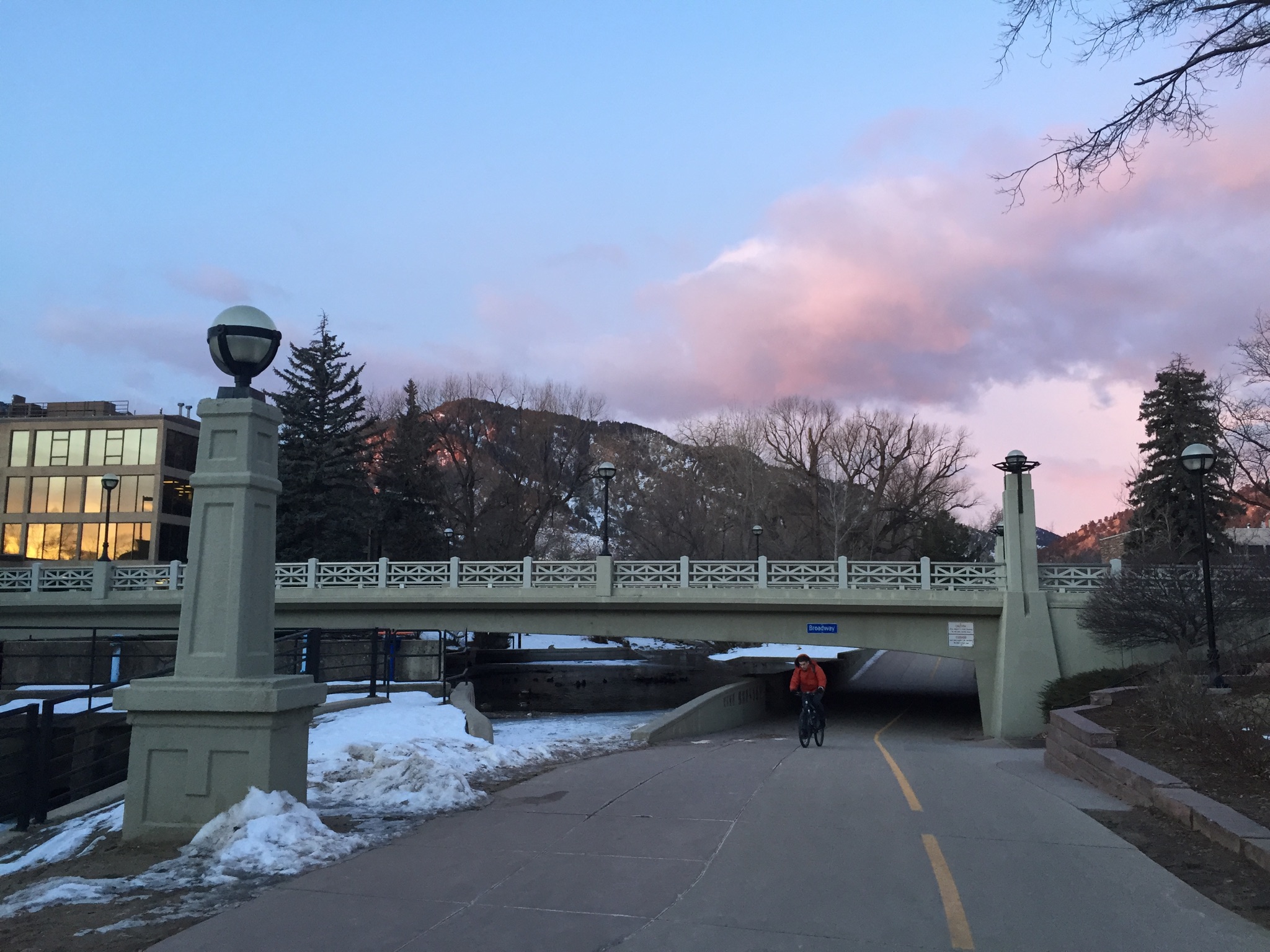
Downtown Boulder bike paths and trails are completeley clear in the winter, which makes commuting, physical activity and programming easy in the winter.
5) Program. Program. Program: Studies show residents in cold climates are more inclined to stay in their homes during the winter, so programming is essential to bring them out of hibernation to community activities anywhere. Boulder gets people to come out to recreation centers with a robust schedule of activities. According to Alison Rhodes, a parks and recreation manager with the city, rec center usage increases 40 percent in the winter.
Lee Shainis, executive director of Intercambio Uniting Communities, which focuses on immigrant integration in Boulder County, added that it’s important to think about the needs of immigrant communities during the winter. What climate did the new community members come from, how can programming support their needs, and what activities can build bridges? In Boulder, activities take advantage of the region’s unbelievable natural resources. Activities such as snowshoeing are economical and easy for everyone. Even bike rides are popular. As the joke goes in Boulder, bike lanes and paths are cleared faster than the roads.
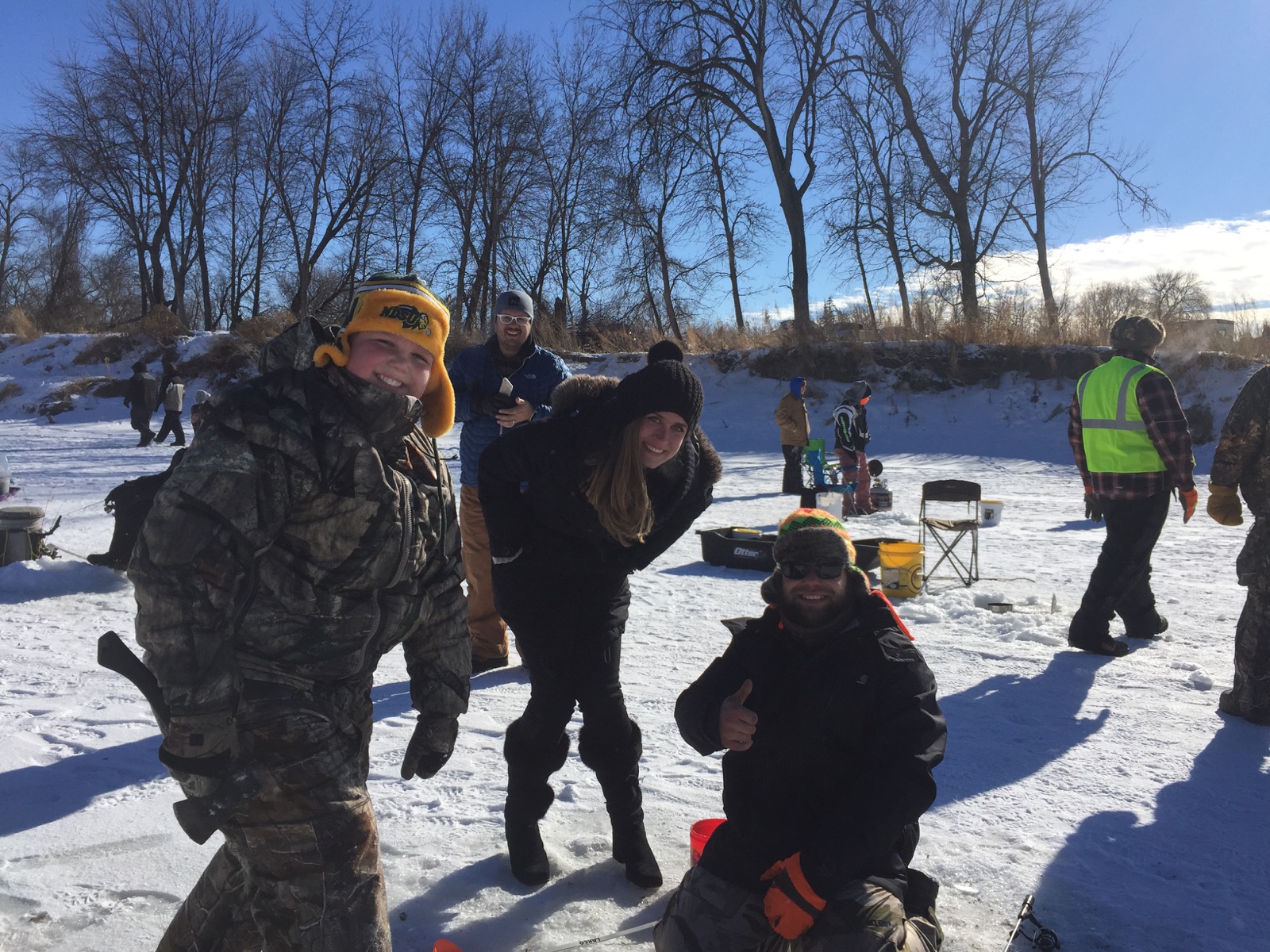
Program Associate Michelle Huttenhoff at the Frosty Bobber Festival, learning how to ice fish from locals in Grand Forks, N.D.
4) Embrace and celebrate: We saw this firsthand in Grand Forks, with the Grand Forks Young Professionals bringing back the Frosty Bobber Winter Carnival after a nine-year hiatus. This festival celebrates many winter activities, from the age-old tradition of ice fishing to Snowga (yoga in the snow). Over a thousand residents participated. Corey Mock, a North Dakota state representative and a leader in bringing back the festival, summarized it like this: “We hibernate during the winter… This festival gives us an opportunity to confront and celebrate the harsh elements.” That happened even with wind chills of -14 F.
Just to the south, Fargo is also embracing winter. This season people there launched the North of Normal Festival, a “frostival” that asks folks to “quit apologizing” for winter; it even featured a mobile sauna. Festival creators Joe Burgam and Simone Wai see this as a way to connect residents. It was an “instant community building event on wheels,” Wai said.
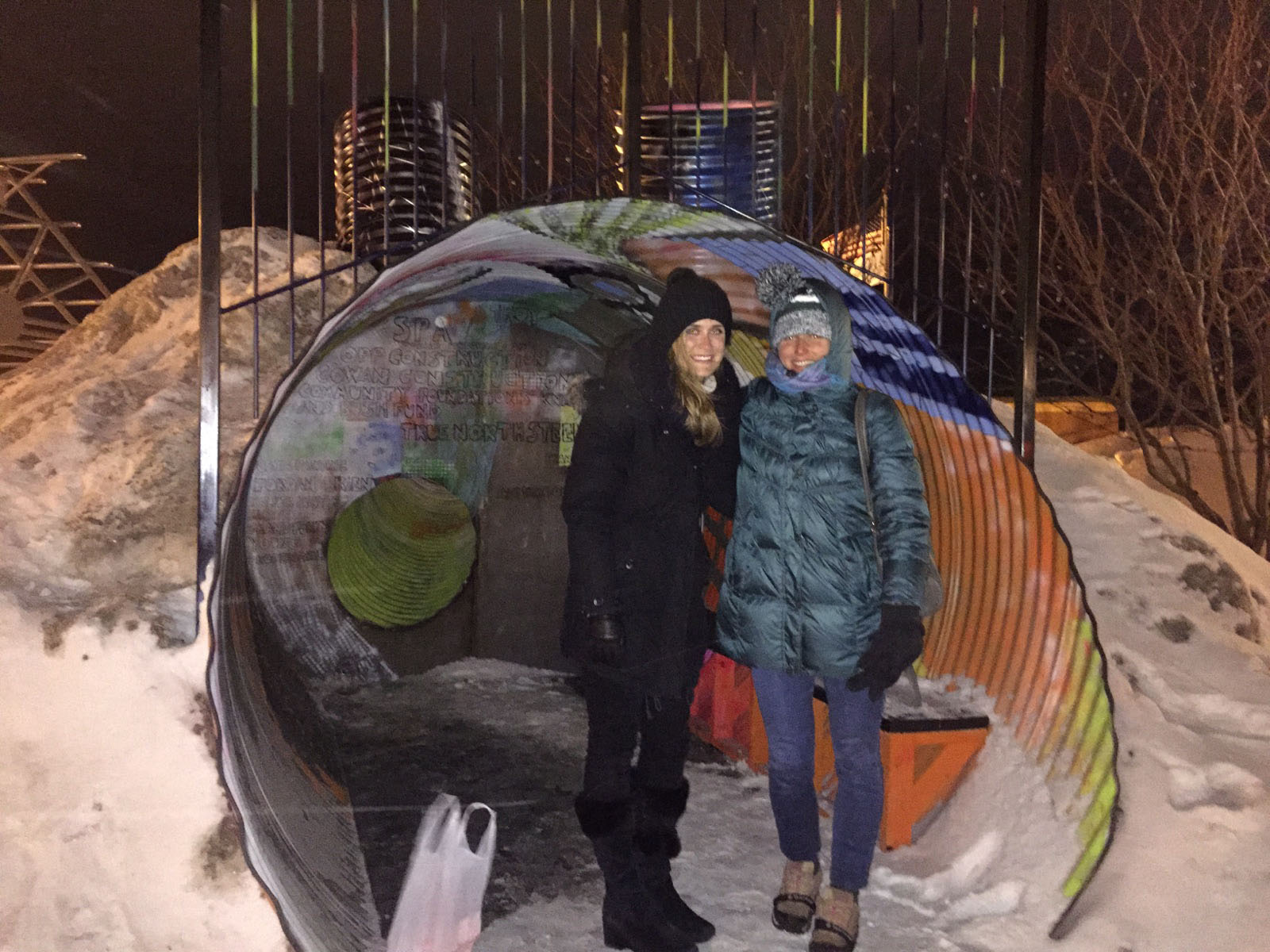
Program Associate Michelle Huttenhoff and Program Director Lilly Weinberg in a warming hut in Grand Forks, N.D.
3) Stay nimble: Programming and festivals are great, but winter weather can be unpredictable. You need a contingency plan. The week of the Frosty Bobber Festival, the windchill index dropped to almost -40 F. That makes features like warming huts critical for the comfort (and safety) of participants. This goes for programming too. Have a backup plan. Many communities run programs throughout the winter, rather than one large event. That mitigates the risk and keeps people engaged throughout the season.
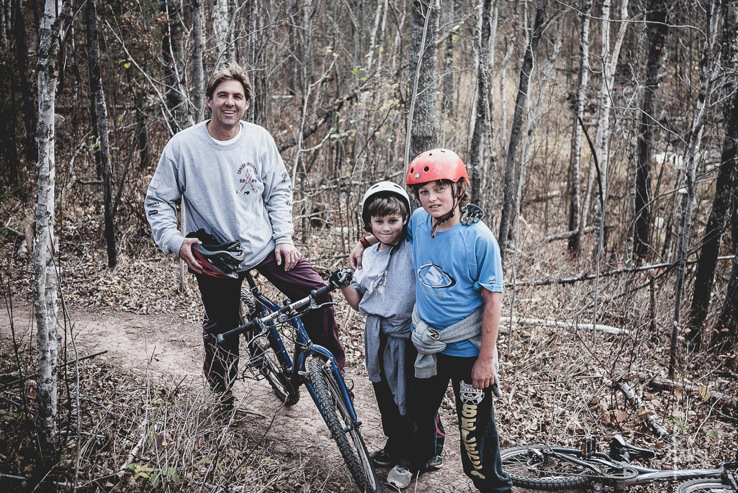
Bridging the adventure gap – mountain biking during the winter in one of many of Duluth’s trails. Credit: Duluth Children’s Outdoor Charter.
2) Mind the adventure gap: Winter activities, sports and gear are expensive, with many lower-income communities left out because of the cost. This divide is often referred to as the “adventure gap,” a major equity issue in some communities. Duluth is finding solutions. In 2015, the city started the Duluth Children’s Outdoor Charter, adapted from Ontario, Canada, which commits to provide access for all of its children to access its amazing outdoor amenities. Those amenities are one of the reasons the number of college graduates ages 25 to 35 who live there has increased by 23 percent in the past five years. Nils Arvold, a Duluth native, recently moved his family back from Boston specifically because of the diverse and unlimited access to winter recreational activities, often just walking distance from downtown. Why wouldn’t you want to enjoy an ice-climbing park like this?
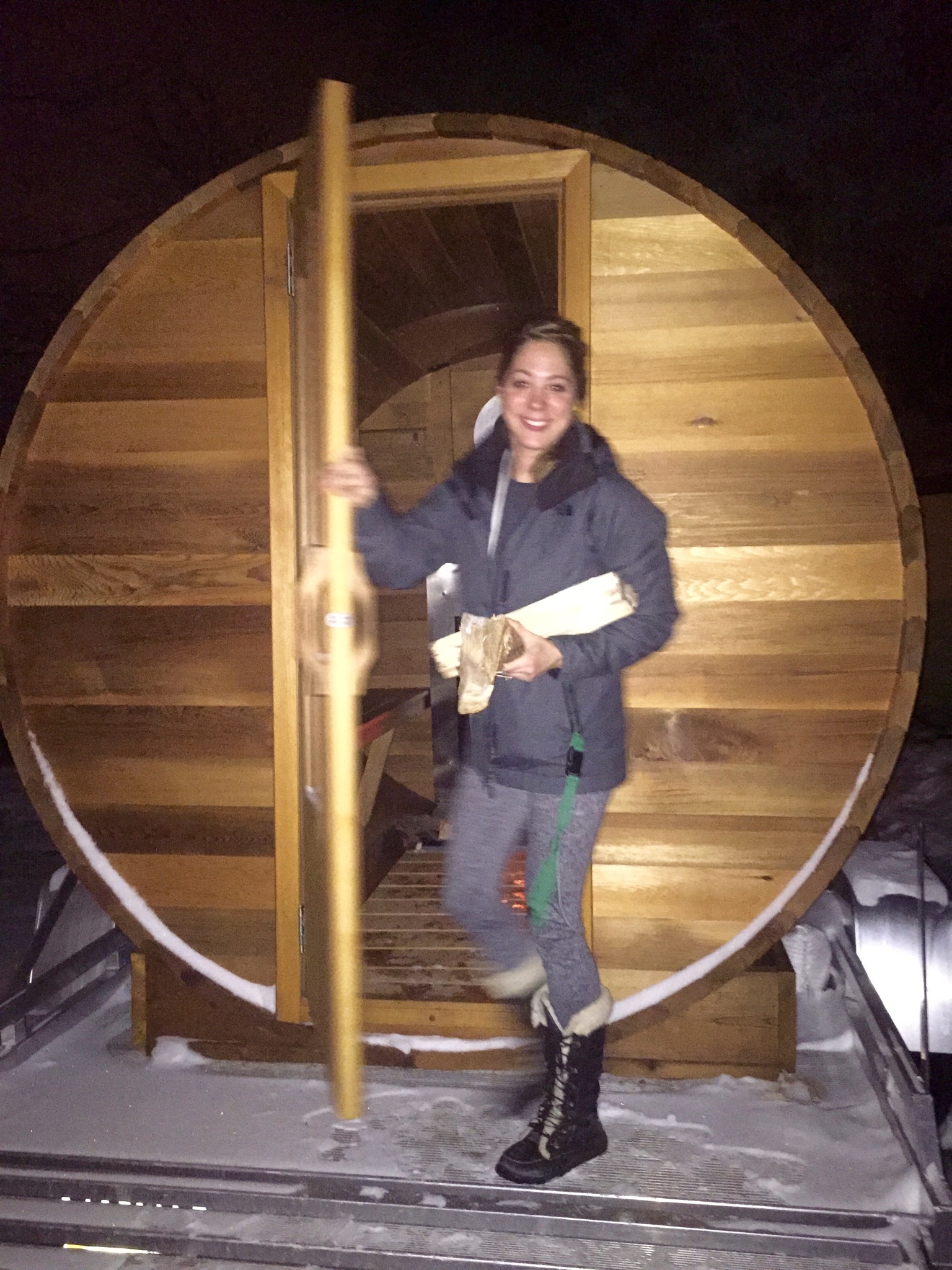
Copy, adapt and paste within your community – the innovative “mobile sauna” in Fargo, N.D.
1) Look to Canada: There is so much to learn from our neighbors to the north. Both the winter huts and outdoor charter were adapted from there. But there is much more we can do. We are watching closely Edmonton’s innovative programming and The Forks in Winnipeg. Grand Forks is certainly noticing, and that’s why Knight is sponsoring Hazel Boris from PlaceMakers to help develop ideas for the downtown during winter.
Grand Forks also has a finalist in the 2016 Knight Cities Challenge partnering with the Canadian design firm 8 80 Cities to pair open streets thinking with winter strategies for engaging the community.
That’s just a part of the picture, though. How does public transportation function in harsh weather conditions? Some of our communities are already thinking about this; a handful of partners from our communities traveled to Minneapolis and St. Paul, Minn., for the Winter Cycling Congress, which focuses on increasing bicycling and walking among people of all ages and abilities through the winter. We’re excited to see how our communities take what their learning and put the ideas to work in their own cities.
Lilly Weinberg is the program director for community foundations at Knight Foundation. Email her at [email protected] and follow her on Twitter @lillyweinberg.
Michelle Huttenhoff is the program associate for community foundations at Knight Foundation. Email her at [email protected] and follow her on Twitter @mhuttenhoff.
Recent Content
-
Community Impactarticle ·
-
Community Impactarticle ·
-
Community Impactarticle ·


